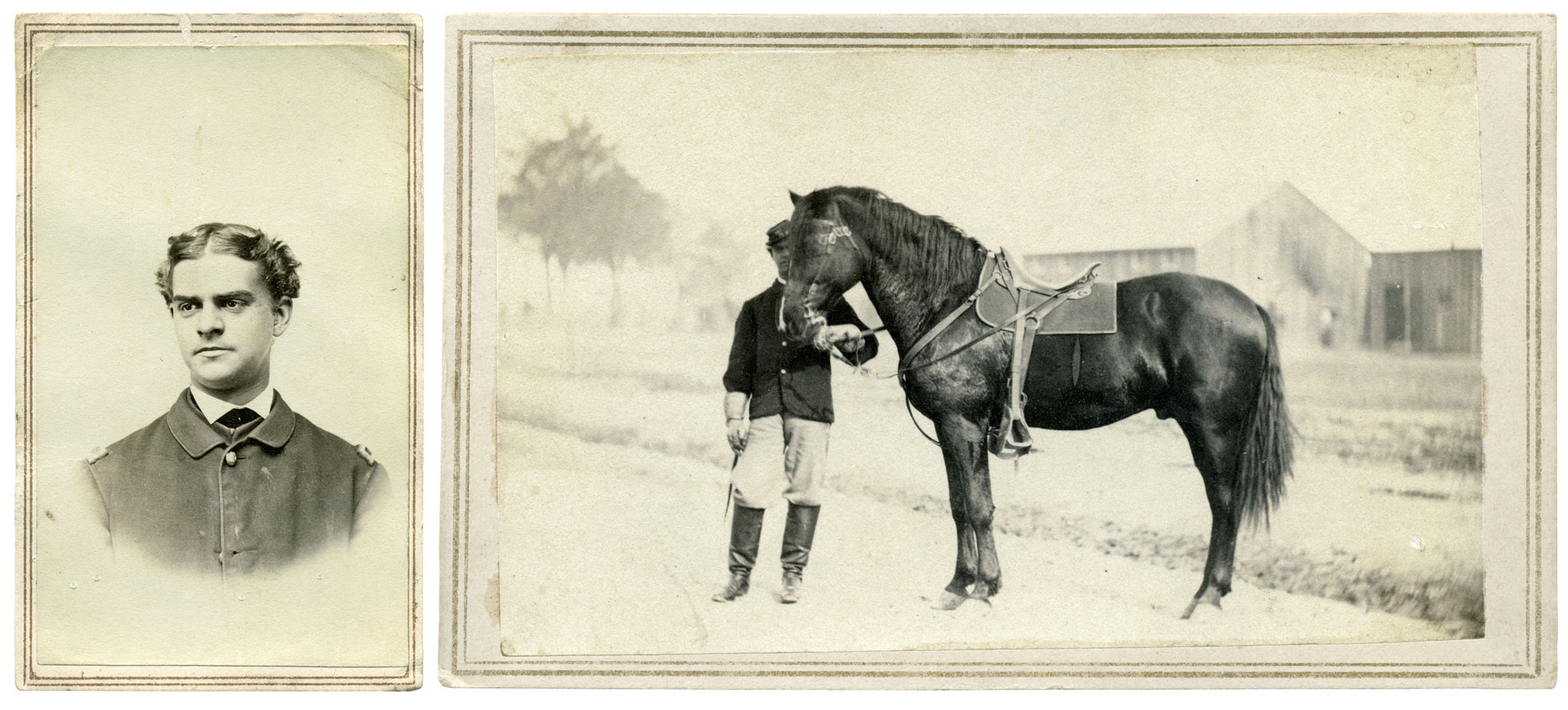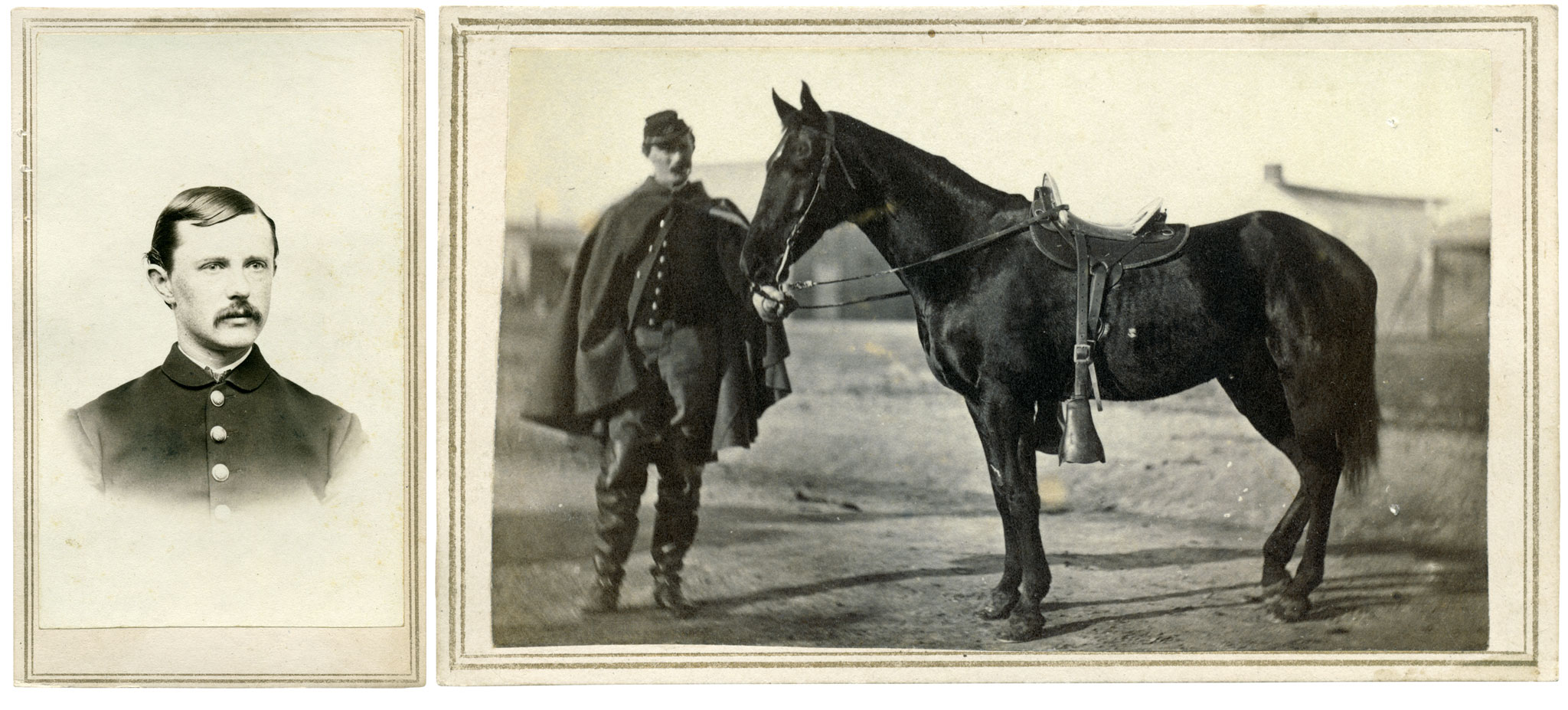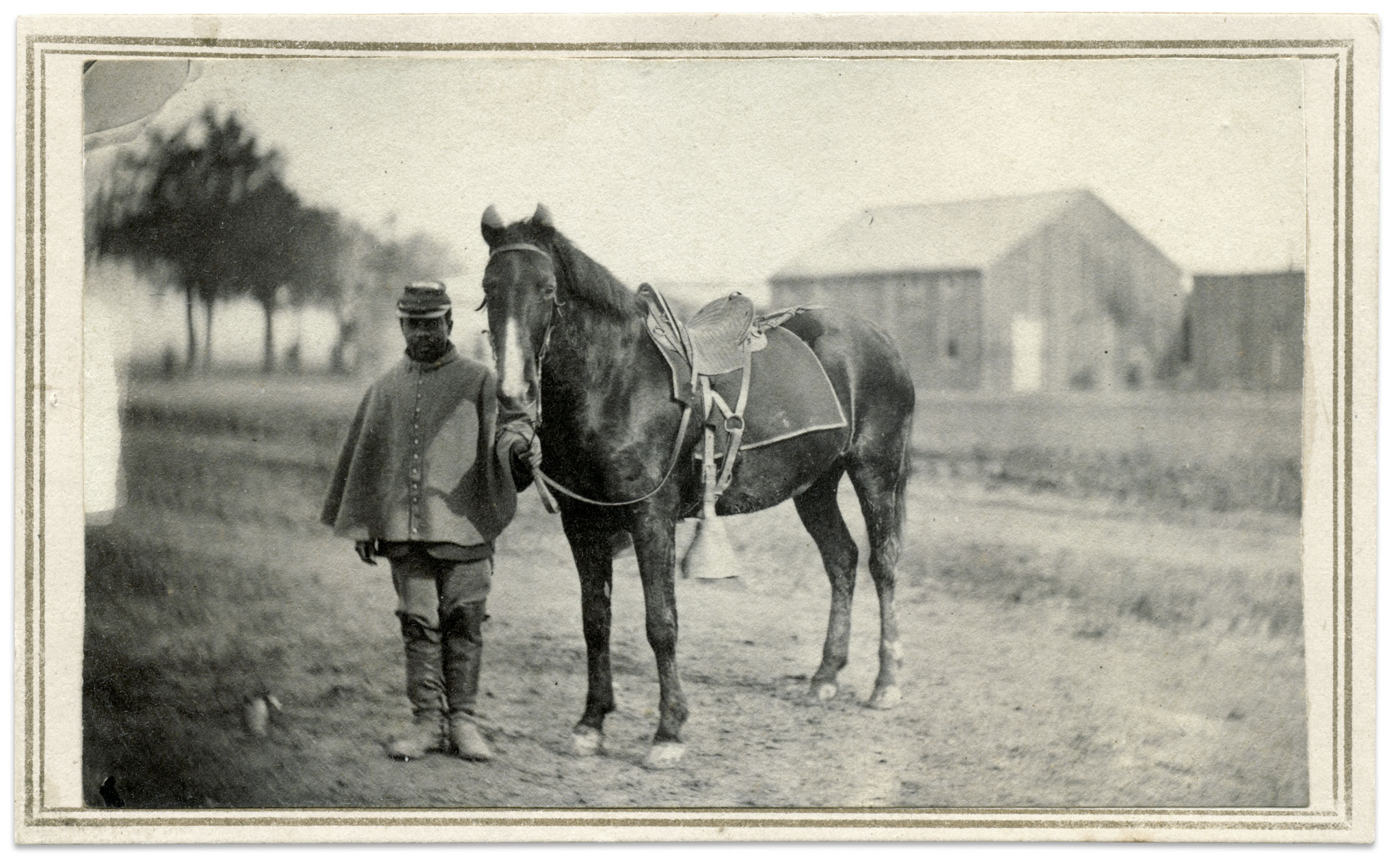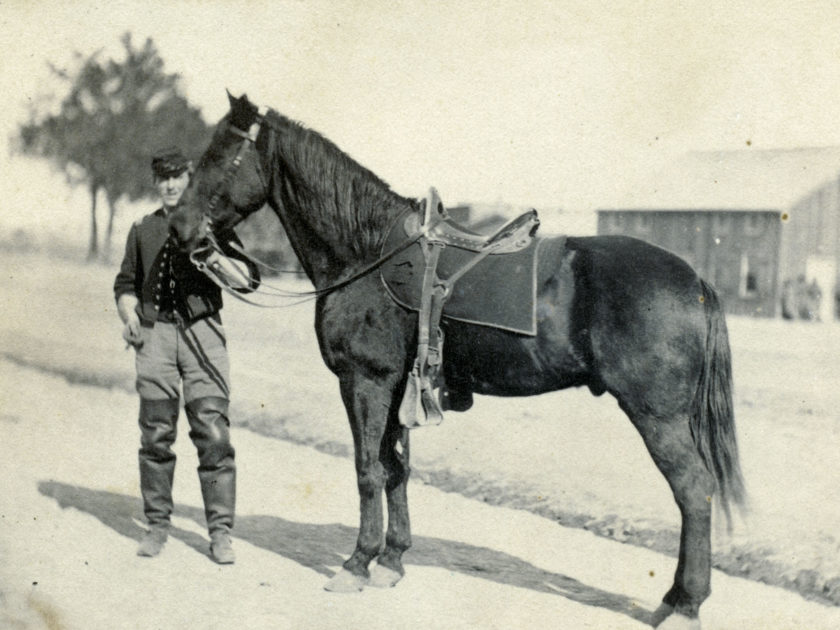By James Paradis
The 5th Massachusetts Cavalry was the only black cavalry regiment from Massachusetts. Its veteran commander, Col. Henry S. Russell, had distinguished himself earlier in the war with two Bay State regiments, the 2nd Infantry and the 2nd Cavalry.
The men of 5th mustered in early 1864 and trained at Camp Meigs, in Readville, Mass., the same training site used by the famed 54th Massachusetts Infantry. While in camp, they learned that their pay would not be equal to that of their white counterparts. In the May 7, 1864, issue of the Anglo-African, an African-American newspaper published in New York City, a black soldier from the 5th reported, “The paymaster called to see us on the 22nd inst., and left a few greenbacks. There was some murmuring amongst them on account of the pay. Well there might be, for the Sergeants, Sergeant Major, and Chief Trumpeter are no more than privates as regards pay.” He expressed the men’s hope that Congress would soon remedy the disparity. Their desires were realized later that summer, when Congress passed legislation for equal pay.
“The soldiers of the Fifth cavalry proved themselves to be men of nerve, taking things as coolly as veterans.”
In May 1864, the regiment departed Massachusetts to join the defenses of Washington. The men learned the disappointing news that, although a cavalry unit, they would not be issued horses, but rather would be armed and accoutered as infantry. They were sent straightaway to Maj. Gen. Benjamin F. Butler at Fortress Monroe, Va., and assigned to the XVIII Corps of the Army of the James. They arrived in time to participate in operations against Petersburg and Richmond.
On June 15, the 5th joined other regiments in an assault on Confederate positions at Baylor’s Farm, northeast of Petersburg. One cavalryman reported, “We kept on, while the shell, grape and canister came around us cruelly. Our Major and Col. Russell were wounded, and several men fell—to advance seemed almost impossible; but we rallied, and, after a terrible charge, amidst pieces of barbarous iron, solid shot and shell, we drove the desperate greybacks from their fortifications, and gave three cheers for our victory.”
Another trooper recalled, “The soldiers of the Fifth cavalry proved themselves to be men of nerve, taking things as coolly as veterans.” He added that they “displayed a high degree of courage, such as was well worthy of imitation.”
The success at Baylor’s Farm was short-lived. The advance soon ground to a halt and Union forces dug in for what would become a nine-month siege.
The 5th would miss much of the hardships of life along the siege lines. Before the end of the month, the regiment headed for Point Lookout in Maryland, where the men guarded Confederate prisoners of war until the end of the year. One trooper, Gustavus Booth, wrote to the Anglo-African stating that the men were doing their duty “cheerfully,” and that when finally issued horses they would be “one of the best cavalry regiments in the service.”
Meanwhile, the lieutenant colonel of the regiment, Charles Francis Adams Jr., campaigned vigorously to get his troops mounted. He petitioned the senior leadership of the army, including Lt. Gen Ulysses S. Grant, generals George G. Meade and Henry Halleck, and Secretary of War Edwin M. Stanton. He also leveraged his political connections—his father was, at that time, the U.S. Ambassador to Great Britain, and his grandfather and great-grandfather each served as President of the United States.
Finally, in early 1865, Adams achieved his goal. His men received their horses. On February 14, Adams succeeded Col. Russell and took charge of the regiment.
The 5th returned to action in March 1865 in a cavalry role. Fate returned the regiment to Virginia, where it participated in the climax of the campaign against Richmond and Petersburg.
Early on the morning of April 3, 1865, a terrific explosion from the direction of Richmond awoke the cavalrymen. “It seemed almost to cause the earth beneath our feet to quake, we could not at the time form my conjecture what it was,” recalled one private in the regiment. “At half past seven a.m., the bugle sounded the well-known call for boots and saddles. After receiving orders to mount we were drawn up in line where Col. Chas. Francis Adams Jr., the commanding officer, made known our destination, by telling us that this day would likely seal the fate of the 5th Massachusetts Cavalry, and that he wanted every man to do his duty as a soldier in defence of his country’s rights, and at all hazards not suffer the colors we had so bravely defended on former occasions to be disgraced by any act of cowardice. He hoped that every man of us would be able to eat his dinner that day at 12 o’clock in the rebel capitol.”
Another soldier recalled that they “proceeded towards Richmond for about four miles, when we dismounted to fight on foot. We waited about half an hour, and as heavy cannonading was going on in front and skirmishing on our right we again mounted, and the balance of the distance to Richmond we went on a gallop. …We passed infantry, artillery and some cavalry, and entered Richmond, the first mounted men in the city, which was entirely evacuated by the Confederate army.” He added, “Going through the city we passed thousands of citizens, colored and white, who cheered and cheered us as we rode in triumph along the streets.” The fleeing Confederates buried several torpedoes, or mines, as booby traps, but the “contrabands” that watched them plant the devices informed the black cavalrymen where they were hidden.
The Confederate surrender did not end the regiment’s service. The 5th was ordered to Clarksville, Texas, where it served until mustered out on Oct. 31, 1865.
Of the 61 officers and 1,325 men in the regiment, seven were killed, 121 died from accident or disease, and two died as prisoners of war.

In 1862, 18-year-old PATRICK TRACY JACKSON JR. (1844-1918) left school and briefly served in the 4th Battalion Massachusetts Infantry. He later joined the 1st Massachusetts Cavalry, and left the regiment in early 1864 to become an officer in the 5th. He served in companies D and I, and remained with his men until the regiment mustered out in the autumn of 1865.





GEORGE F. WILSON (about 1841-1920) of San Francisco, Calif., served in the 2nd Massachusetts Cavalry prior to becoming a second lieutenant in the 5th. Promoted to first lieutenant in April 1865, he served on detached duty as an aide de camp and as provost marshal. He mustered out of the regiment in September 1865 due to disability.


References: Noah Andre Trudeau, “Proven themselves in Every Respect to be Men: Black Cavalry in the Civil War,” Black Soldiers in Blue: African American Troops in the Civil War Era, John David Smith, ed.; The Union Army: A History of Military Affairs in the Loyal States, 1861-65, Vol. 1; Nick Salvatore, We All Got History; Worthington Chauncey Ford, ed., A Cycle of Adams Letters, 1861-1865; National Archives, Individual Service Records; Anglo-African.
James Paradis authored Strike the Blow for Freedom: The 6th United States Colored Infantry in the Civil War and African Americans and the Gettysburg Campaign, Sesquicentennial Edition. He teaches history at Arcadia University and at Doane Academy where he serves as Dean of the Upper School.
SPREAD THE WORD: We encourage you to share this story on social media and elsewhere to educate and raise awareness. If you wish to use any image on this page for another purpose, please request permission.
LEARN MORE about Military Images, America’s only magazine dedicated to showcasing, interpreting and preserving Civil War portrait photography.
VISIT OUR STORE to subscribe, renew a subscription, and more.

